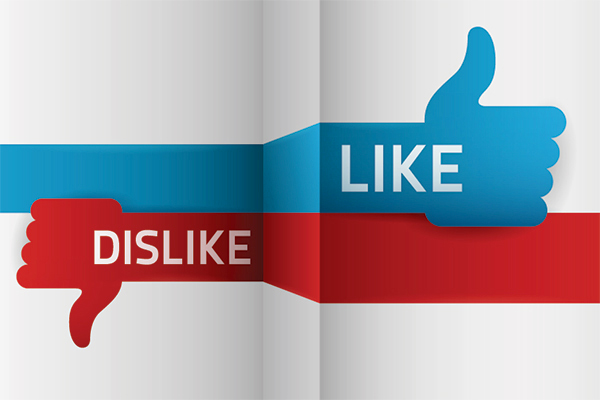The next time somebody tells you that we need to move beyond 'top down' solutions and do things 'bottom up', ask them which way is North on their compass - where are they exactly, and where are they trying to go?
The point is not so much to disorient them but to get beyond cliches, and think harder both about what really matters and the stubborn persistence of lazy distinctions.
For starters, there is nothing inherently wrong with 'top-down'. There's a time and place for authority, hierarchy and regulation, usually to resolve intractable debates or create impact at scale, but it needs to be democratised and contained with suitable checks and balances.
And there is nothing inherently right about 'bottom-up', because while there is also a time and place for context, specificity, granularity, and the passion that comes from particular people fighting for particular purposes in particular places, there is a limit to what you can achieve without the major levers or economic and political power.
The deeper problem is that this geometric juxtaposition feels cliche-ridden because it is two dimensional, 'flatland' view of the world and the power that lies within it. If the RSA's emerging 'Power to Create' worldview is going to walk its own talk, we do need to clarify our position with respect to top down and bottom up approaches, while also framing the scope for social change more imaginatively. Different kinds of problems need different social change strategies, and most problems need all of them.
As indicated in a previous post, I think 'The Power to Create' pivots around a range of interrelated ideas:
- An analysis of ongoing socio-technical disruption: The reality of new technologies undermining old forms of cultural, political and economic power.
- A grasp of the urgency of innovation: The need for new ideas and institutional forms to tackle major systemic problems.
- A belief in the value of of mass creativity: A vision of social transformation grounded in meaningful creativity for the many, not the few.
- A reappraisal of ‘small is beautiful’: The belief that a legion of small initiatives can and should challenge or usurp big businesses and governments in areas where their activity is relatively ineffectual.
- A philosophy of freedom: A commitment to a vision of the good life grounded in self-actualisation and the joy of turning our ideas into reality.
So let's assume for now this is an emerging vision of the world you can adhere to and see yourself in - what follows for how to act constructively within this emerging world?
So let's assume for now this is an emerging vision of the world you can adhere to and see yourself in - what follows for how to act constructively within this emerging world?
As Cultural theorists have highlighted before, forms of social change are manifold, and often in tension, so while the power to create apparently leans towards 'bottom-up' approaches, I find the following four-part structure useful, not least because it highlights the importance of the deeper forms of behaviour change that have defined Social Brain's work over the last few years.
We need to use all available tools; that means we need the vitality of personal agency, the systemic impact of of smart regulation, the elegance of socio-technical innovation and the humanity to keep ourselves present, open, aware, connected, vulnerable and inquisitive as the whole thing unfolds.
1. Top-Down (Political change for challenges relating to social and economic structure)
Key features: Impact at scale, usually involuntary, often relies on policy influence followed by regulatory change.
Regulation gets a hard time, but it is sometimes necessary to create change at scale. The major changes needed to break down some of the barriers that currently constrain the power to create might include:
- Challenging the legal status of corporations as persons, which arguably gives big business far greater legal protections than they deserve.
- Working with the Law Society to shift fiduciary duties, so that companies can fulfill their legal obligations to shareholders while also factoring in the long term viability of the business, which would make it much easier to be genuinely sustainable.
- Introducing a basic income for everybody in the population to strengthen the core economy based on care and trust, and mitigate the risks that prevent many from starting their own business. In case this sounds loony left, it might surprise you to know that Hayek supported this idea.
- Campaigning on land reform. Coming from Scotland, the law of trespass in English law is a pain and the freeholder/leaseholder divide on many properties in England strikes me as utterly bizarre; such constraints get in the way of various forms of community action and people using their properties in creative ways, for instance to create or store their own energy.
2. Bottom-up (Social change for challenges relating to tangible and specific issues of a civil, civic or ecological nature)
Key features: Specific and contextual, usually voluntary but often need-driven and stemming from individuals or small groups and often tied to particular places or domains.
Such top-down changes don't prevent bottom-up changes; if anything their purpose should be to facilitate and encourage them. Local context is not a noise obscuring an underlying Platonic political form, but the very lifeblood of what matters to most people. Recycling, for instance, is about global resource constraints; but for many it's about orange council bags under the sink or blue boxes out in the street.
We need to use all available tools; the vitality of personal agency, the systemic impact of of smart regulation, the elegance of socio-technical innovation and the humanity to keep ourselves present, open, aware, connected, vulnerable and inquisitive in this process.
If the power to create is partly about a reconceptualisation of agency, that means motivating people to act, which means seeing how the macro is manifest at a micro level in our lived experience, and starting from there. Paul Hawken's classic book 'Blessed Unrest' about the rise of social movements gives an excellent overview of this kind of power.
3. Side-to-side(Change stemming from socio-technical disruption, characterised by systemic innovation)
Key features: Change that stems from loose associations of values and interests across domains, usually disruptive or entrepreneurial in spirit, grounded in virtual networks, now pervasive and international due to social media.
What the conventional idea of 'bottom-up' change doesn't capture is the significance of what Jeremy Rifkind calls lateral power and the growth in 'disintermediation' - people can get things done by themselves or with other like minded individuals without intermediaries in ways that were unimaginable until recently.
The very idea of top and bottom feels partial in this context. In addition to the hierarchies of vertical power(top down, bottom-up) there are heterarchies of lateral power; networks of varying size, shape and influence that often lie dormant but can suddenly be hugely influential in response to particular events, and cut across regions and countries.
Such shifts have altered the very idea of social change as necessarily place-based or even country-based, as indicated by Avaaz among others. This kind of horizontal influencing power, fuelled by ongoing technological disruption, lies at the heart of the rationale for our focus on 'the power to create'.
4. Inside-out (change stemming from contemplative practices, seeking transformative changes to our ends as well as our means)
Key features: the psychological, spiritual and cultural underpinnings of all the other forms of social change; often contemplative or reflective in spirit, targeted mostly at major hidden assumptions, immunity to change, and adaptive challenges.
As argued here previously, what interests me most personally is the inner power to create; the relatively neglected fourth form of social change that is about integration, and the connection between the work we do on ourselves and the work we do out in the world. To grow in confidence and individual agency, to believe we can turn our ideas into reality in a meaningful and not merely tokenistic way, we need to work hard on on the consonance between what we think, say and do on a regular basis. And we need a much more robust idea of what to aim for in life, for ourselves and society as a whole. Only from that kind of enriched foundation, which we often need to work on ourselves to attain, can we act with conviction in the world.
The inertia within established forms of economic and political power is so very strong, that we have to keep on reminding ourselves what really matters to us in order to steer ourselves away from financial instability, social recession, and ecological collapse. And where to exactly? With finite personal time on a physically finite planet, we need the existential to inform the economic. Our collective task is to help each other build a sense of power and purpose, and use that power to create the conditions that will allow us all to live fulfilling lives.
Dr Jonathan Rowson is Director of the Social Brain Centre at the RSA and tweets here.
Related articles
-
How can we give up bad habits for good?
Ian Burbidge
With the post-Christmas resolutions looming, when we try to address the worst of our seasonal over-indulgences, the question remains: how can we give up bad habits for good?
-
Why fake news doesn't swing elections
Tony Greenham
Fake news doesn’t swing elections, but neither does ‘truth’. We have always filtered new information to fit our existing prejudices. The real danger to our democracy is not an absence of truth, but an absence of trust.
-
Tell me a story? Or give me the figures?
Nathalie Spencer
What is the best way to influence stakeholders and generate change? Different approaches to generating change have different strengths, when should each be used to the best effect?




Be the first to write a comment
Comments
Please login to post a comment or reply
Don't have an account? Click here to register.